
As you have seen this week right here on Riverside Green, I’ve been on a Kaiser kick. I’ve always found them pretty cool. You simply don’t see them very often. I thought I was fairly well-versed in the Kaiser-Frazer lineup. But as it turns out, one model had escaped my attention, until I met someone who owned one: The two-door 1954 Kaiser Special club coupe.
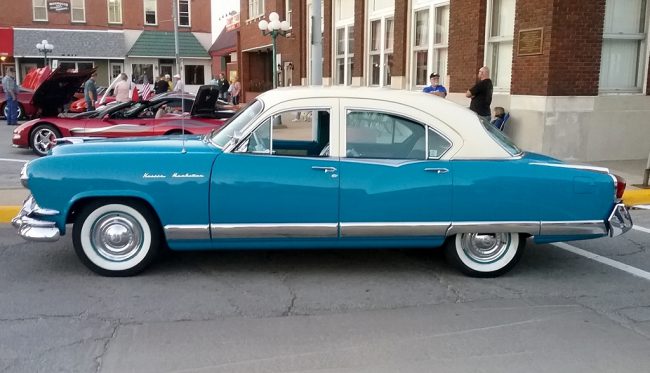
The 1951 Kaiser was a remarkably attractive car. Completely redesigned by Howard “Dutch” Darrin, all Kaisers featured an extremely low belt line, and increased glass area.

A “Darrin dip” in the rear quarter panel eliminated the modern yet somewhat bland envelope body of 1947-50.
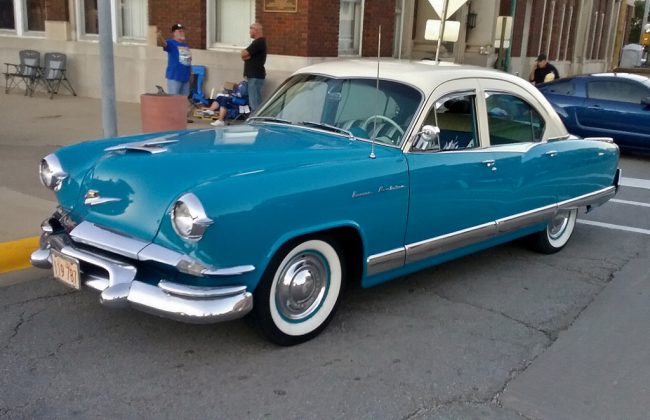
Initial sales of 139,452 were respectable for a new kid on the block like Kaiser-Frazer. But sales fell off a cliff the following year, to 32,131. In a nutshell, Kaiser, despite being one of the most modern cars on the road in 1951-52, had a few things that turned buyers off.

They only came as a two- or four-door sedan, plus the kinda-sorta wagon, the Traveler, a hybrid sedan/wagon with a two-piece tailgate. No hardtop, no station wagon, and no convertible meant that there weren’t any flashy models to lure customers into showrooms.

Actually, there was a convertible in 1950-51, but it was a 1/1-scale “kit-bashed” affair, based off of the-you guessed it-four-door sedan.
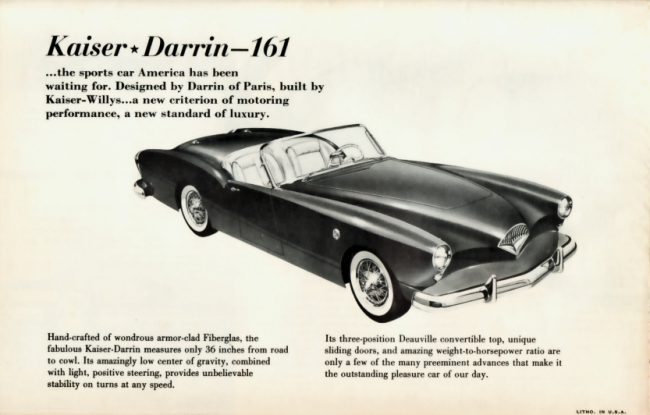
And of course there was the Darrin we discussed yesterday. But by the time it finally appeared in showrooms, it was far too late. Only 435 were built.
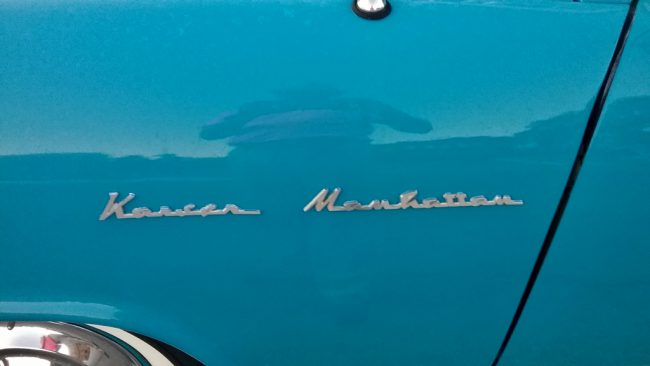
A limited number of dealers, the lack of a V8 option at the dawn of the horsepower race and Kaiser’s rookie status as a make all contributed to the rapid decline.
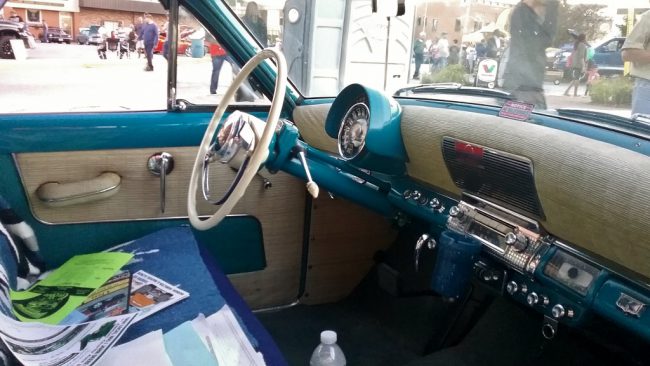
1952 sales, as previously mentioned, were a fraction of ’51 production. With less sales, Kaiser wasn’t able to fill their coffers and use it to come up with new product. A self-perpetuating cycle. Not much could be done.
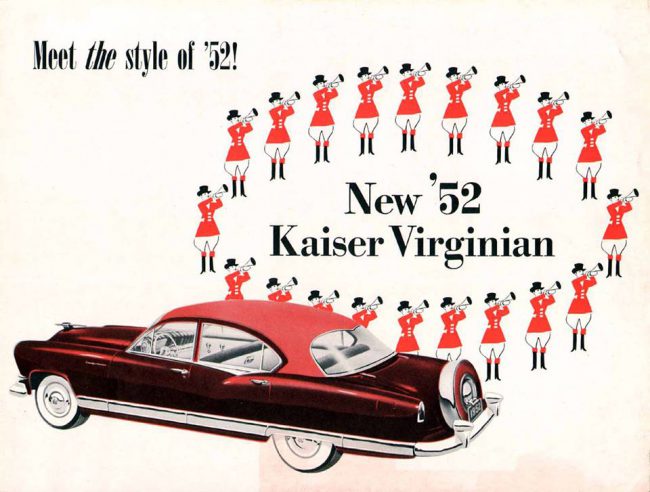
1952 Kaiser Virginian
But in late 1953, they were able scrape up enough cash for an attractive facelift for the 1954 Kaisers. Unfortunately there were still only two- and four-door sedans. No two-door hardtop, no convertible, no station wagon. The two doors were now known as club sedans. The Traveler was gone, never to return.
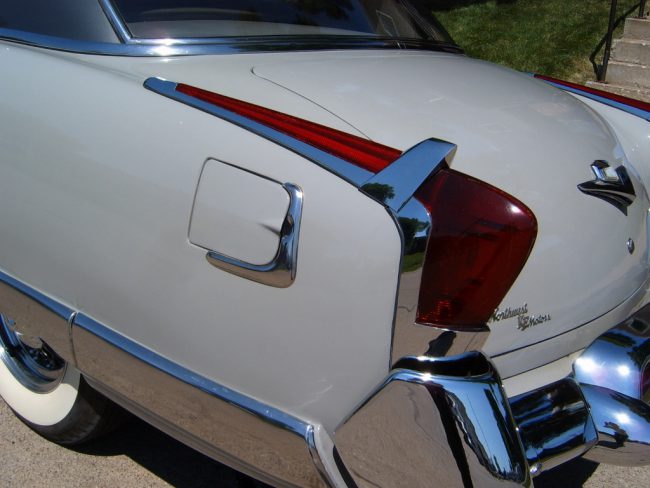
Out back, Kaisers had swoopy new taillight clusters, with an additional lens running over the top of the rear fender. While this second light did not have its own bulb, it was connected to the main lamp, allowing light to diffuse to the second lens. This allowed the taillights to be seen from the side, which made the few 1954-55 Kaisers on the roads look pretty cool at night.
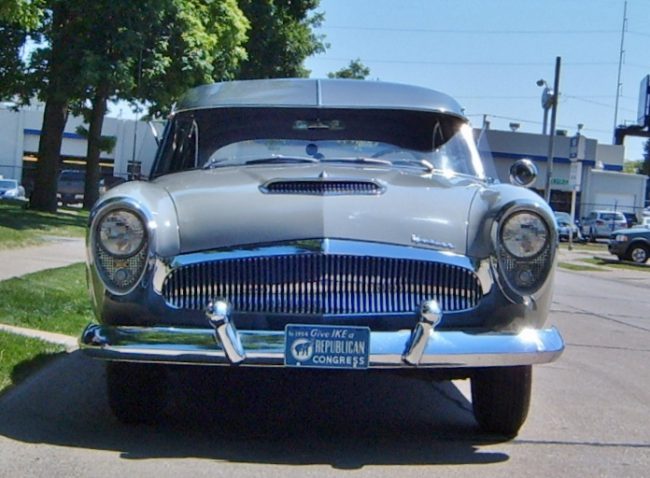
The front styling was apparently inspired by the Buick XP-300 dream car. As the story goes, Henry J’s son, Edgar Kaiser, saw the XP-300 at a show and fell in love with the styling. Thus all 1954 Kaisers received a nose job. This treatment was attractive, but it kind of made Kaisers look a lot like a ’54 Buick Special.
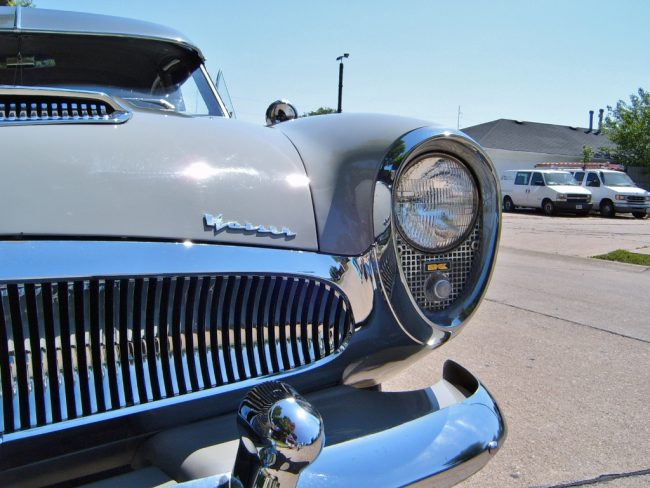
Headlights were now integrated into a large chrome bezel with simulated mesh grilles and a Kaiser “K” emblem. Also Buick-like.
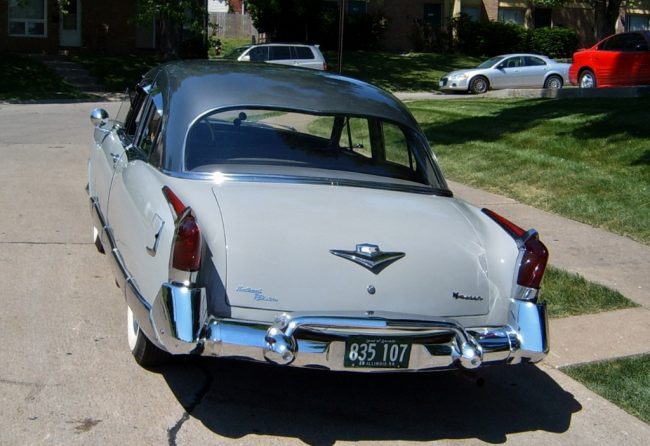
One thing Kaiser did on a regular basis, thanks to lackluster sales, was turning leftover cars from the prior model year into “new” cars by adding new serial numbers, and as was the case in 1954, new trim, grilles, etc. Thus, there are two series of the 1954 Kaiser Special. However, the fancier Manhattans were all genuine ’54s.
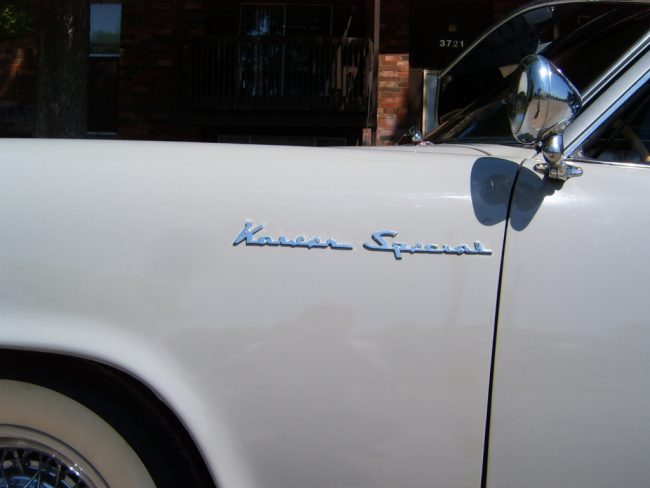
The so-called 1st Series Specials were leftover 1953 models with 1954 grilles, headlights and taillights added.
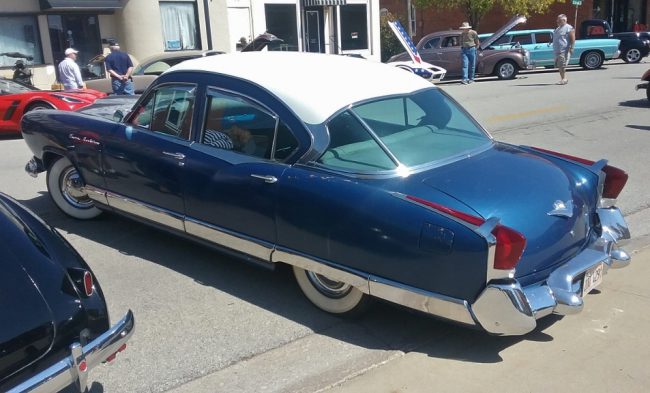
They retained the single piece rear window in lieu of the ’54 Manhattan’s 3-piece wraparound unit, and also retained the broader chrome side moldings and fancier interiors of the 1953s. About 3500 1st Series Specials were made, of which about 500 were 2-door Club Sedans.
Anyway, today’s featured car is owned by my friend K V Dahl. It is a 1st Series Special Club Sedan, one of 500 built, and according to the Kaiser-Frazer Club, one of 10 known examples today.
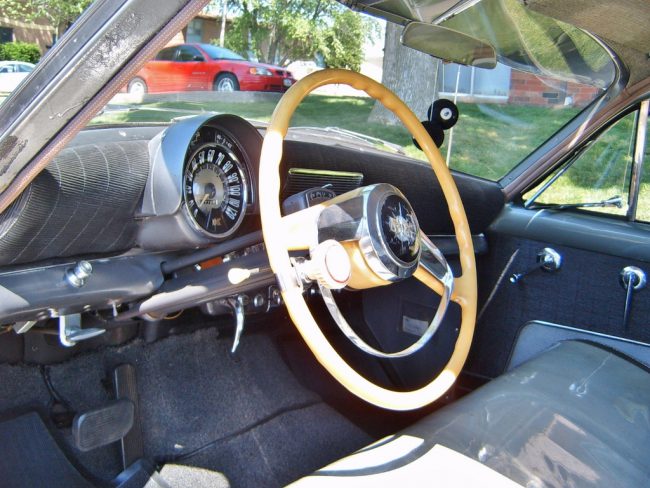
The interiors on these cars were also rather ahead of their time. Although Kaiser automobiles would not see the Sixties, at least in the United States, they had some very advanced features for their time, including a padded instrument panel with all major gauges clustered in the driver’s line of sight.

A manual column-shifted transmission was standard, but a popular option was the GM-sourced Dual-Range Hydramatic. K V’s car is so equipped, though at first I thought it was a three-on-the-tree, as the linkage and housing on the steering column does not look much like an automatic. The necker’s knob was a popular aftermarket addition at the time.
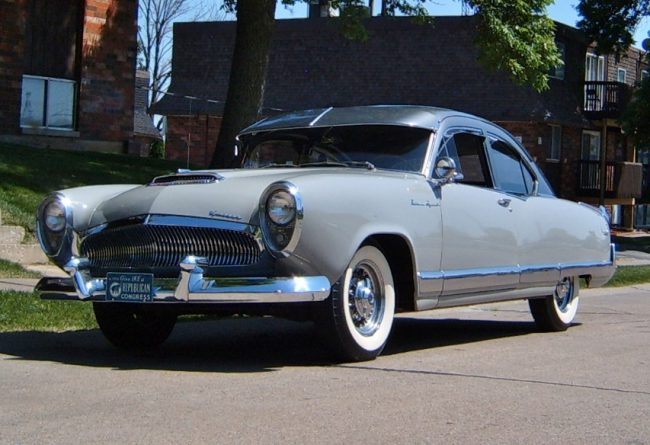
Interestingly, the 1st Series Specials were more numerous (if you can call it that) than the “real” 1954 Specials. While 3500 1st Series cars were made, the 2nd Series cars amounted to only 749 four doors and 180 two door club sedans. Well, many folks decided to play it safe and get a ’54 Chevy or Ford. For one thing, they were cheaper. And for another thing, there were many, many more Ford, Chevy and Plymouth dealers than K-F showrooms.

The big news for 1954 Kaisers was under the hood. Standard on Manhattans was a McCulloch centrifugal supercharger, perched atop the Continental-sourced L-head six cylinder.
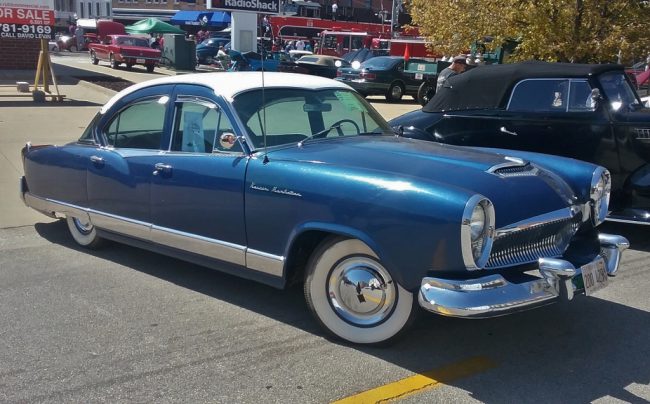
1954 Manhattan
It turned the 118 hp Super Sonic Six into the 140 hp Super Power Six. While it is not shown as an option on Specials in the Standard Catalog of American Cars, by 1954, Kaiser was so anxious to sell you a car that they would build practically anything you wanted, and never mind the factory specifications.
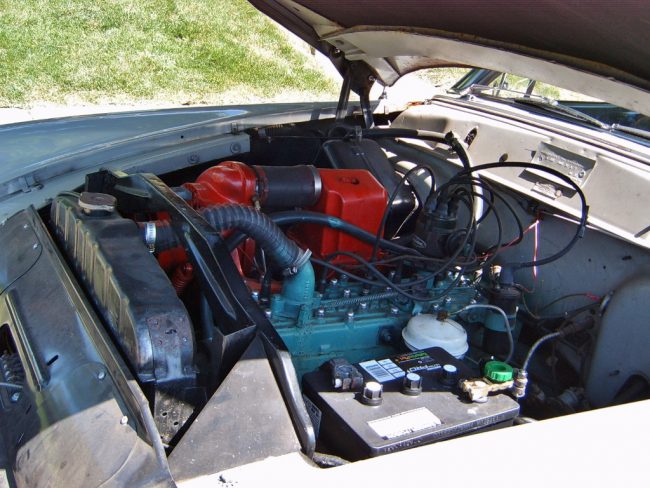
So how does one acquire a 1954 Kaiser as his first car in the late 1980s, when most of his contemporaries were looking at 5.0 Mustangs and Z28s? Well, K V has always been into vintage rolling stock, same as me. At the age of 13, he had saved up enough money from mowing lawns to buy this car, in a rather weathered condition at the time.
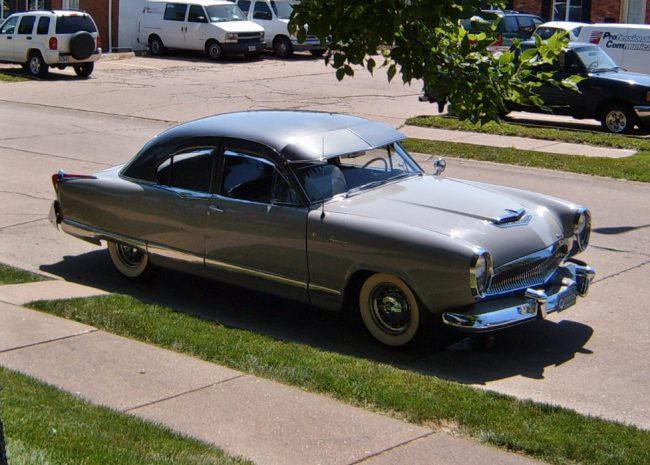
It was purchased from the wife of the original owner in Bettendorf, IA. They had taken it on their honeymoon when the car was new. Now, while the supercharger is an interesting and desirable option, don’t go thinking it is just like a Duesenberg SJ; it’s not. As K V told me, “It’s still slow, the supercharger just makes it less slow.”
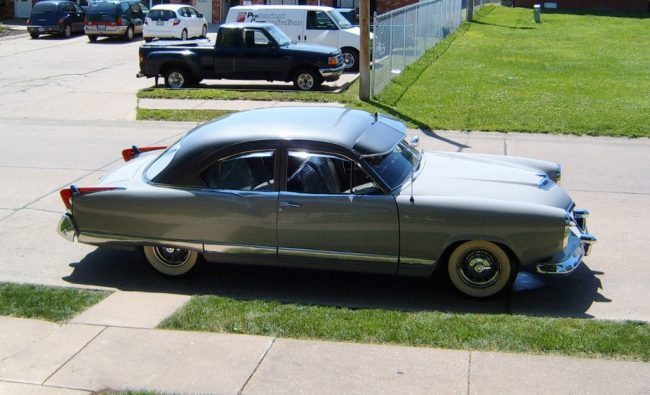
I can tell you that that is true, as I was able to get a ride in this piece of Willow Run history. I met K V at the dealership, and he said he had to run a couple errands before we could find a suitable spot to take photos; would I like to go along? Oh yes, absolutely! While K V warned me it rode a little rough, and it had been restored nearly 25 years ago, I found the ride thoroughly enjoyable. Unlike many modern cars, the Kaiser had great glass area, and thanks in part to the accessory hood visor, the car was more than comfortable in traffic with the windows down, despite the warm day. It was cool to hear the supercharger spool up when accelerating from a stop, too. One thing you do take for granted in modern cars are those four-wheel disc brakes, but the Kaiser is just fine so long as you plan ahead. And it does have those nice big taillights – and brake lights!
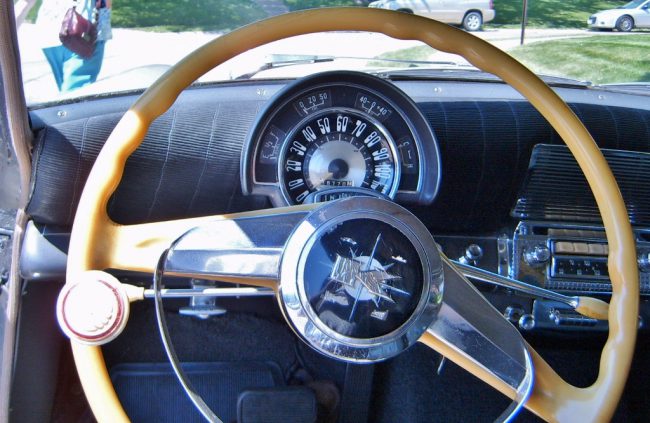
K V’s Kaiser also has a nice selection of factory accessories. When he got it, the car had the standard wheel covers, but he has since added the Kelsey-Hayes wire wheels, a $290 option in 1954, and the very same wheels available on early Chrysler 300s. It also has the Dual-Range Hydramatic ($178), white sidewall tires ($22), two-tone paint ($15), and an 8-tube radio that still worked just fine on our brief outing ($89).
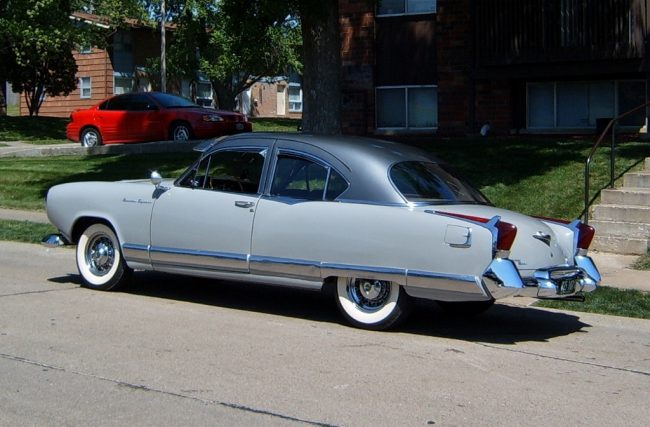
Getting back to the 1954 Kaiser lineup, Manhattans were the top of the line model and ran about $300 higher than Specials. They all featured the 3-piece backlight, unlike 1st Series Specials. Standard equipment on Manhattans included bumper guards and bumper wings, chrome wheel covers, chrome tailpipe extension, oil bath air cleaner (yes, it was an option on Specials!), and a rear compartment cigar lighter, among other things.
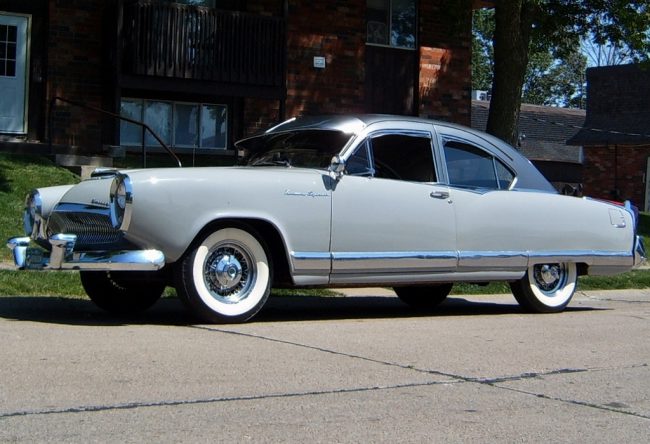
The new look was attractive, and despite being largely carryover since 1951, the body was still one of the most modern-looking cars on the road, but it didn’t help. Sales crashed to about 8500 for the year, nearly 20,000 units below 1953’s total!
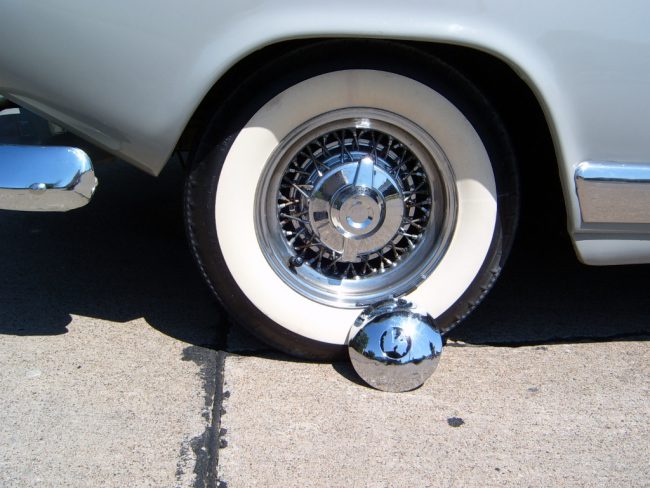
Do these wheels look familiar? They should, as they were a popular item on Chrysler’s muscle-bound “banker’s hot rod” 300 from 1955 through the early ’60s. The original Kaiser hubcap is shown in this photo, but K V prefers the Kelsey-Hayes style knock-off hubcap instead. I’m inclined to agree. But he does have a set of four original caps, just in case the originality police bear down on his car.
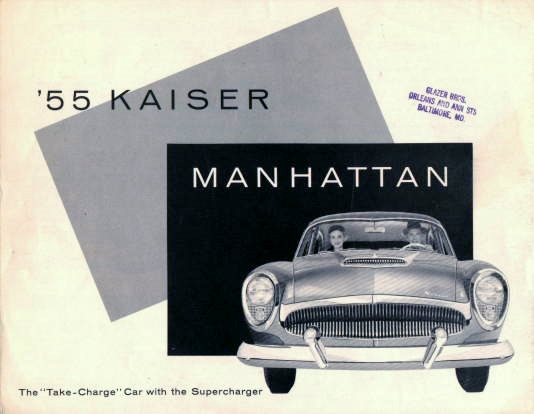
1954 was bad for Kaiser, but 1955 was even worse. In its final year, 1955, choices were limited to the Manhattan club sedan and four door sedan. With a mere 1231 made (of the 1231, only 210 were sold in the United States; the rest were part of a purchase order from Argentina), Kaiser had had enough. They pulled their car lines (including the Willys Aero, acquired in their purchase of Willys-Overland in 1953) from the North American market, to concentrate on selling Jeeps.
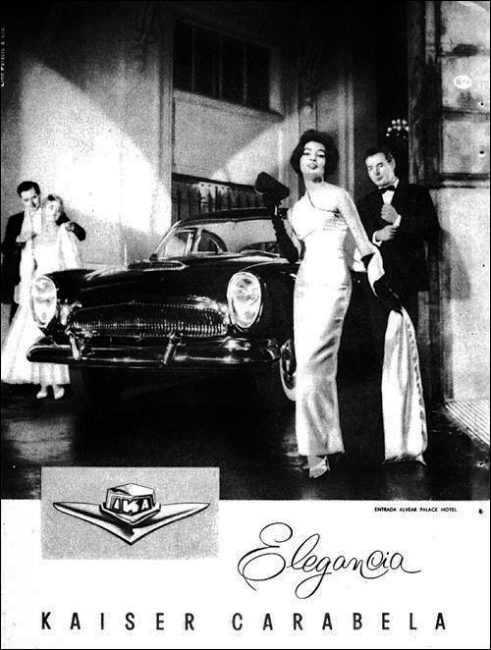
1960 IKA Kaiser Carabella ad
The Kaiser, however, did get a second life in Argentina as the Kaiser Carabella, a virtual twin to the 1955 Manhattan sedan and sold through the 1962 model year.
They entered a postwar seller’s market with high hopes, but it just didn’t last. They had a nice car, but the lack of a V8, convertible and hardtop hurt them, not to mention consumers who were leery of a make that had only been in business since the 1947 model year. It was so much easier to buy a Ford V8 or Plymouth Cranbrook. But they were sharp cars while they were in business, and surviving examples like K. V.’s Special show just how attractive they were!







6 Comments
Great pictures and write-up. Lack of a V-8 and the limited body selection were indeed fatal problems in the 1950s, but Darrin was a genius in making something stylish with no budget.
They should have made it, with that beautiful specimen – beautiful but so different from what the Big Three were pushing.
Two things made them fail: First, the lack of a V8. If Packard knew what was going to happen to them, out of their purchase of Studebaker, they’d have been tripping over themselves to sell Kaiser V8 engines and maybe even the line.
Those things didn’t need a V8, per se – but it was an emotional demand, like four-wheel-drive is today. Everyone who was anyone had to have a car with a V8.
Kaiser had one in the pipeline, with David Potter…but time was running out.
The other strike, was the lack of confidence in the company. And the front office. Henry Kaiser seemed a miracle-man, after his Liberty Ship program…he could do anything!
…not unlike Elon Musk a few years ago.
And again as with Musk, chaos in the K-F front office took over. Joe Frazer left to go play with his Rototiller patents. The Frazer name went the way of Plymouth or Mercury – a slow, public death. The Kaiser line kept contracting. Talks of layoffs or closure were hanging over like fog.
Who would buy a new car from a company with such an uncertain future?
In terms of uncertain future – are you talking about Fiat, Mitsubishi, Jaguar, Smart, Mini, or Tesla?
Subscribed .
I’m too dam busy to read all these great articles (yes, on TTAC too) so I’ll try to catch up next week or something .
-Nate
I stumbled across a Kaiser back in the early 1980’s near Ravenna, Ohio. I’d only ever seen them in pictures and this one was far from perfect. It was missing a lot of it’s exterior chrome and badging. Fortunately, the interior remained fairly intact and I could see the K logo on the steering wheel hub along with the unique roof line that helped me identify it as a Kaiser and not a weird Buick. At the time, it was just a 30 year old car, but considering most cars didn’t live past 10 years old in Northeast Ohio at the time, it was something unusual to see.
To my eye, the Kaiser is a bit of a conundrum. Henry Kaiser was the captain of an empire, maybe not as well known or reviled as the Rockefellers, but a similar status. His companies touched all aspects of modern US life and some of it lives on as the Kaiser Foundation and Kaiser Permanente Health Care. Regardless, I would have imagined that in postwar USA that the Kaiser name had enough household recognition that it could have felt like a safe bet buying one of their cars. Especially, compared to some of the other postwar cars, like a Tucker or a Davis or any of the other vaporware cars that were created in the seller’s boom.
Like Studebaker, we all know what happened, we can all dissect it to our heart’s content, but we cannot change what happened. Had the car wars between Ford and GM happened a few years earlier, maybe the consolidation of independents would have included Kaiser (and Willys) and allowed them to get the V8s and possibly the other body styles so desperately needed. Or it could have been a complete cluster, like Packardbaker, I don’t know.
I was at the Gilmore recently and they have a Kaiser Traveler on display there. I’m a big fan of these kinds of cars; I’ve owned several more modern hatchbacks and have loved the utility of them. Unless you count the Chrysler and DeSoto Suburbans of the same era as the same kind of car (they were fairly different), there was nothing quite like the Traveler. I would have thought with the weight of all of the knowledge stored in the Kaiser Corporation, they could have come up with a few more market-popular models, too. I guess when you’re successful building Liberty ships for the sea, you think Liberty ships for the roads is a good idea, too…
I randomly landed on a Hemmings page where a one-of-one handbuilt car is being offered for sale, and serendipitously came upon this pic in the background of which not one, but two Kaiser Special Club Coupes sit!
https://assets.hemmings.com/uimage/64000031-770-0@2X.jpg?rev=1